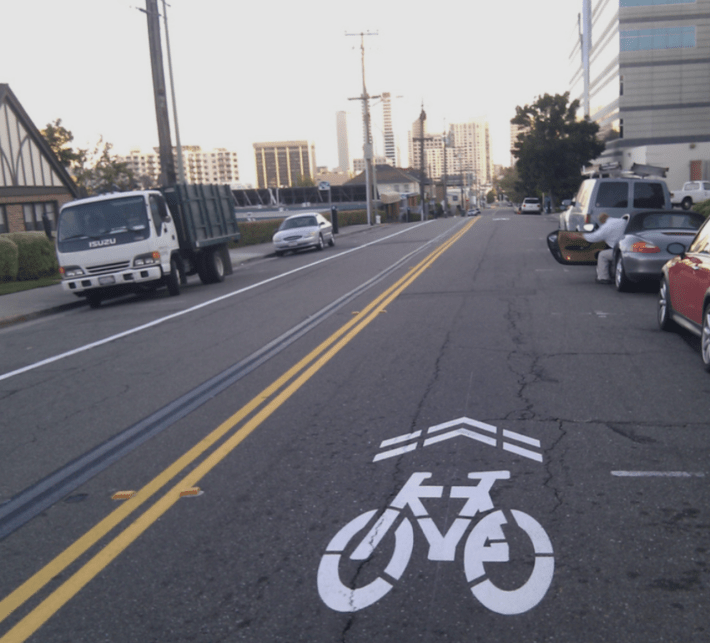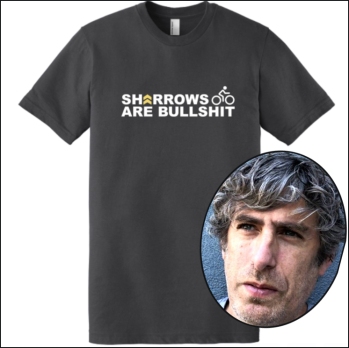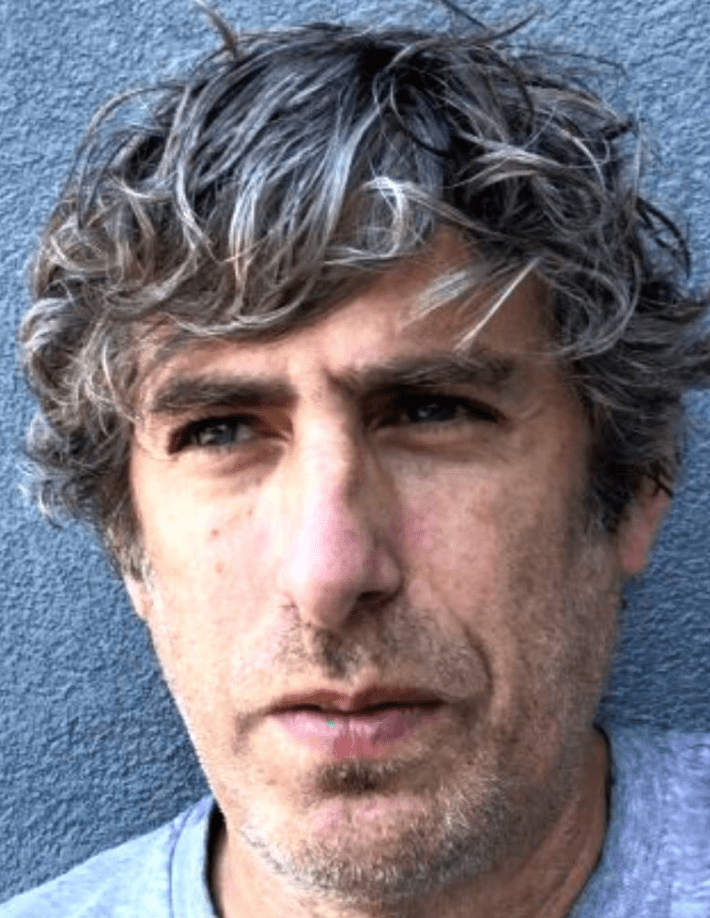Editor’s Note: This article first appeared on Medium and is republished with permission.
Why are sharrows bullshit?
I am so glad you asked, dear reader. Let me offer a concise explainer of why from a safe-streets perspective, these lane markings are the bane of American roads: confusing, useless — worse than useless, actually — and deployed in bad faith.
Before I start throwing bombs, don’t feel sheepish if you have no clue what sharrows are. Good for you — it’s honestly a shame that something so useless must inhabit even a few of your brain cells.
I’ll lay it out for you quickly. “Sharrow” is a portmanteau for “arrow-shaped shared-lane marking.” There’s a decent chance you’ve seen them — two baffling chevrons and a bicycle icon painted on the street. Often in the U.S. they are paired with equally baffling signs on the side of the road that also depict a little bike and say “SHARE THE ROAD.”
I am not going to waste much of your time (or mine) explaining the theoretical benefits of sharrows. The executive summary as that they are intended to make bike riding safer and more orderly. Theoretically, their primary job is to tell drivers to watch out for bike riders, who are legally allowed to ride in the middle of the lane.
I suppose that sounds OK on paper, but in the real world, sharrows are hateful.
For one thing, the icons and signage are terminally incomprehensible. If the point is to admonish motorists that people on bikes are legally entitled to take the lane, why use such cryptic methods? In conversations with drivers (and on countless soul-sucking posts on social media and story comments), I’ve sadly learned that many non-riders think sharrows and the accompanying signs are actually talking to cyclists — reminding those entitled and naughty bike riders to stopping slowing down or stressing out people in cars. Think about how clear signs or painted road markings that say BICYCLES MAY USE FULL LANE would be. Instead we have hieroglyphics and some kind of vague Buddhist mantra about sharing.
What’s worse, the sharrows and signs don’t extend any real benefits to bike riders. Consider when you see stop signs, painted crosswalks, speed limit signage, and curbs painted red. All these things alert road users to specific rules being implemented at that location. But sharrows and share the road signs do not do this. Wherever sharrows might be installed, bike riders already have all the rights these garbled markings are trying to convey. Painting sharrows changes absolutely nothing. And ironically, some drivers get doubly confused by the presence of sharrows, and conclude erroneously that bike riders only have the right to take the lane where this signage and marking exist.
But we haven’t even gotten to the suckiest part yet. These days sharrows are deployed as a bad-faith alternative to actually making roads safer for bike riders. In recent years, sharrows have become increasingly popular as cities try to balance calls from safety advocates to install quality bike lanes — you know, so folks feel more encouraged to ride and get killed a little less often — and grumpy motorists who don’t want to relinquish driving lanes or parking spaces for bike infrastructure. To the politicians and engineers stuck in the middle, sharrows seem like a devilishly perfect compromise — a way to placate the pro-car populists while still being able to claim you did something.

In short, they are perfect for city officials who care enough about safety to do the very least. There’s only one problem: Sharrows are make believe safety infrastructure.
Don’t take my word for it. A 2018 study by two civil-engineering researchers examined data from neighborhoods in Chicago that either got bike lanes, sharrows, or no new facilities over a two-year period. The results were pretty staggering.
Researchers found that areas that got new bike lanes saw bike-commute rates double and injury rates drop 42 percent. Meanwhile, areas that got nothing saw commute rates rise 43 percent as injury rates dropped 36 percent. And areas that got new sharrows saw commute rates rise 27 percent while injury rates dropped 20 percent.
Let these numbers sink in for a minute. Not surprisingly, the data indicates that installing bike lanes did a far better job than painting sharrows in terms of increasing bike commuting and reducing injury rates. But more significantly, sharrows were demonstrably worse than doing NOTHING! People were literally more likely to ride on a street and less likely to get injured if the city didn’t paint sharrows on the road.
Let’s recap briefly. Sharrows don’t make a road safer — there’s data that they are worse than doing nothing. Drivers don’t understand them. They extend no actual legal benefits to riders. Cities like to install them to seem like they’re doing something.In short, sharrows are bullshit.
Peter Flax (@pflax1), right, writes about sports, adventure, and culture. He serves as the editor-in-chief of The Red Bulletin, an active lifestyle magazine from Red Bull.
He is also the former editor-in-chief of Bicycling Magazine, a source for bicycling news, gear reviews, repairs, training tips, and more.







